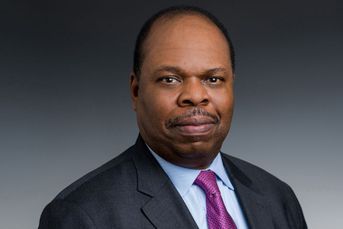How many more wolves are left on Wall Street?
Investors and regulators are more tuned in to fraud now than in the days of the big boiler rooms.
Stratton Oakmont, the notorious Long Island, N.Y., boiler room brokerage, was shut down by securities regulators at the end of 1996. Almost two decades later, “The Wolf of Wall Street” has brought the firm back to life, with drugs, sex and greed as the stars in the Martin Scorsese hit.
Stratton Oakmont because infamous in the first half of the 1990s as hundreds of brokers, working from scripts, cold-called prospects to hawk essentially worthless initial public offerings, eventually raising more than $1 billion in IPO cash. Its listings included the shoe company Steve Madden Ltd. and KICK, the stock symbol for karate school Master Glazier’s Karate International Inc.
The movie has spurred a debate about morality and Wall Street. A movie about Stratton Oakmont, however, raises another set of questions, not about morality, but rather investor safety.
Advisers and their clients may want to know whether the securities and financial advice industries have evolved since 1996, when Stratton Oakmont was at its apex.
Could a Stratton Oakmont rise again? Is the American investing public better protected now than it was almost two decades ago? And does it still believe that investing in the IPOs of shoe salesmen and karate schools will lead to fabulous riches?
“Could there be another Stratton Oakmont today? Certainly, but not on as grand a scale,” said Barry Goldsmith, a partner at Gibson Dunn & Crutcher and former executive vice president of enforcement at NASD, now the Financial Industry Regulatory Authority Inc. “There are still bad brokers and plenty of bad firms out there, but the boiler rooms are smaller.”
Investors and securities regulators, to varying degrees, are more wise to pump-and-dump stock scams, said Mr. Goldsmith, who joined NASD in 1996 as securities regulators were preparing to shut Stratton Oakmont down. And the lousy firms are no longer concentrated in one area, such as Long Island, as they were in the Stratton Oakmont era, making it more difficult for rogue brokers to jump from one firm to the next.
“People are still sold Ponzi schemes and bank notes with fictitious returns, but investors are more sophisticated when it comes to securities transactions,” Mr. Goldsmith said. “When it comes to pushing securities and orchestrating pump-and-dumps using retail customers, investors are more sophisticated and regulators are less tolerant.”
Investment fraud has not abated since Stratton Oakmont was shut down. If anything, it’s gotten worse. Bernie Madoff’s Ponzi scheme, which created $18 billion in losses for investors, makes Stratton Oakmont’s pump-and-dump frenzy look like kids’ play.
But securities regulators, criticized for missing the Madoff scheme and dozens of other Ponzis revealed during the credit crisis, appear to be moving against penny stock promoters before they can establish deep roots.
The Securities and Exchange Commission last month barred Anastasios “Tommy” Belesis, chief executive of the defunct John Thomas Financial Inc., for negligence. He still faces an open fraud complaint from Finra that alleges he bullied brokers, lied to senior staff and intimidated colleagues as his firm sold penny stocks. According to sworn affidavits submitted last winter by ex-John Thomas brokers, the firm promoted at least one pump-and-dump stock scheme of a silver mining firm.
The boiler room broker is a dying breed, noted Josh Brown, a blogger and investment adviser. “These guys are dying out,” Mr. Brown wrote in a blog post last month. Mr. Brown began his career on Long Island in the late 1990s, rubbing shoulders with some refugees from assorted boiler rooms.
“Their licenses are Swiss cheese, and potential suckers don’t answer their land line phones anymore,” he wrote. “It’s hard to con someone you can’t get in touch with.”
This is good news for investment advisers and their clients. However, plenty of dangers remain in the marketplace, particularly involving the sale of single products, Mr. Goldsmith noted. In the run up to the credit crisis, such high-paying schemes ranged from Mr. Madoff’s phony hedge fund to false notes issued by Medical Capital Holdings Inc.
The Stratton Oakmont story is a reminder that financial advisers and their clients need to be as vigilant as ever. Victims of such frauds typically recover pennies for each dollar they invest.
“A lot [of Stratton Oakmont clients] weren’t wealthy and couldn’t afford to lose what they lost,” Mr. Goldsmith said. “The brokers used high-pressure sales tactics. It was relentless.”
Learn more about reprints and licensing for this article.








